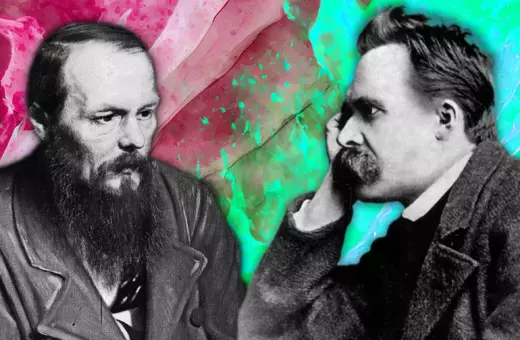Science tells us what things are made of, not what they are. For Graham Harman, Distinguished Professor of Philosophy, named one of the 50 most influential philosophers today, the world’s ultimate nature can’t be captured by equations or unified theories. In his new book Waves and Stones, the leading figure in speculative realism, Graham argues that reality is made of objects that forever withdraw from our grasp, leaving philosophy to explore what science cannot reach. In this exclusive IAI interview, dive into how Graham sees the nature of ultimate reality.
Omari Edwards: Your new book looks at the distinction between Waves and Stones, the continuous and the discrete. What drew you to that as a philosophical problem?
Graham Harman: Sometimes, when I write a book, it is because it is a book I want to read but does not exist yet, so I have to write it myself. This was one of those cases. The distinction between the continuous and the discrete keeps popping up wherever you look, which suggests it is an eminently philosophical problem. And one where too much attention and time has been dedicated to the idea that everything is just in flux, continuous, and objects don't really exist but are just waves in some field.
To explain what I mean: the discrete is the idea that the world is made of detached individual things. The continuous is the idea that the world, or some part of it, is a homogeneous stretch that can be divided however we please. The simplest example is the number line. Between zero and one hundred there are not just one hundred integers. You can count by halves, tenths, or any subdivision at all, so there are infinitely many numbers in that interval. That is what makes a continuum.
Traditionally, space and time have been treated as continua by many philosophers and by contemporary physics in general relativity. They are not made of a definite number of units. You can cut them however you like. Motion is often treated similarly, as an undivided passage from one point to another. By contrast, the discrete is exemplified by individual things, including people. There are two of us in this conversation. That can be counted. What looks like a simple opposition recurs in crucial places across thought and practice.
I want to connect that to your wider project in speculative realism and object-oriented ontology. When you talk about waves and stones, you are not just fitting this distinction into your existing system. You are proposing something new. Before we turn to examples, how does the question connect to object-oriented ontology?
Object-oriented ontology, which I have been working on since my postgraduate studies, talks about the discreteness of objects and what I call their withdrawal, a term I take from Heidegger. Withdrawal means we never have full access to an object. That idea is not unique to me or even to Heidegger. Kant already talks about the thing in itself that we can never reach. We humans are finite and deal with phenomena rather than with noumena.
___
Reality must be preserved, because without it our statements could never be surprised and we would never change our minds.
___





















Join the conversation